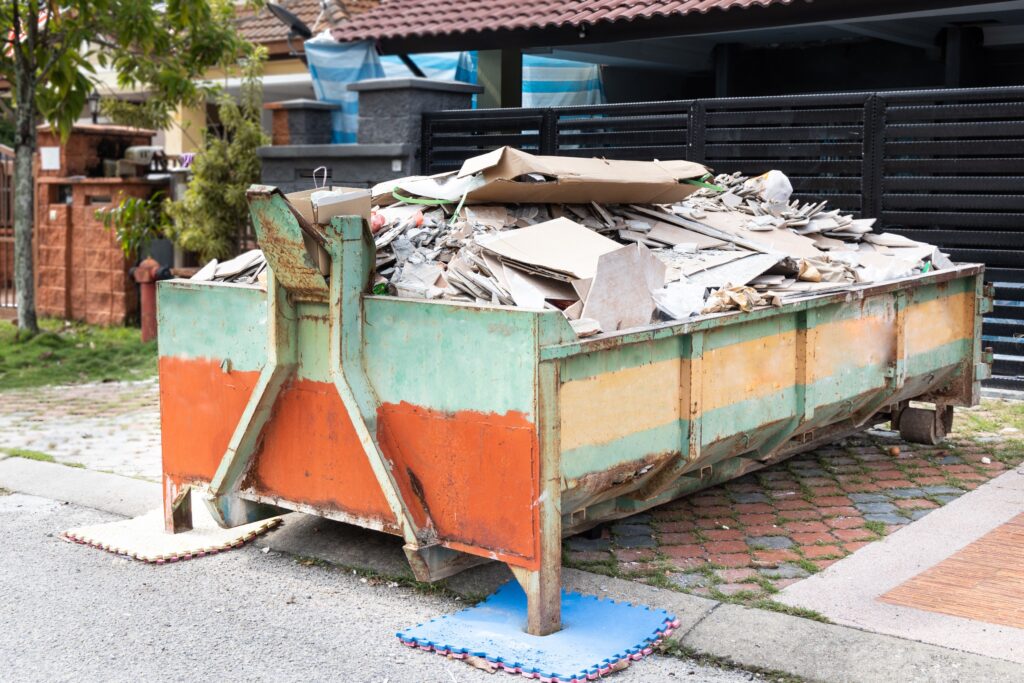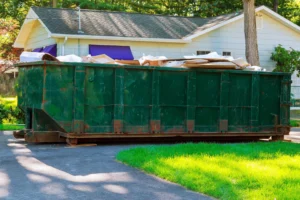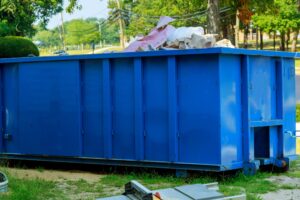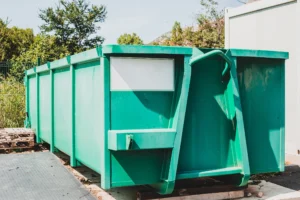Selecting the right size of dumpster for roofing jobs might be the difference between a seamless cleanup and a logistical nightmare. Many roofing endeavors create a large volume of trash such as old shingles or abandoned components, necessitating effective waste management.
Choosing the ideal dumpster when working on roofing projects is not only about accommodating rubbish but also maximizing space and resources. It must strike a balance between acceptable capacity and cost efficiency. This post provides a guide into the process of determining the suitable dumpster size for roofing works, offering insights and practical suggestions to help you speed up your garbage disposal processes.
Assessing the Magnitude of Your Roofing Project

Rent the dumpster from the best company around
Before beginning your roofing project, a thorough assessment of its extent is required to guarantee maximum waste disposal efficiency. To determine the scope of the project, consider the size of the roof, the materials for repair or installation, and the possible debris created. This foresight assists in picking the best dumpster size, avoiding overcapacity and unneeded costs. Furthermore, the type of roofing materials used affects the dumpster selection, since certain compounds may necessitate specialist disposal procedures. By meticulously examining the project’s dimensions and requirements, you may expedite waste management logistics while also contributing to a more cost-effective and ecologically responsible building process.
Tips for Selecting Appropriate Dumpster
- Understand Your Size Selections
Choosing a bigger dumpster guarantees you will have enough room to accommodate materials without necessitating frequent pickups, while a smaller one would be adequate for minor repairs. Begin by analyzing the size of your roofing project, considering factors like debris volume and disposal frequency. Consult with your roofing contractor to gauge your project’s scope accurately. Consider the size and capacity of available dumpsters, balancing cost-effectiveness and usability. Matching your roofing demands to the proper dumpster size simplifies trash management and increases work performance. - Consider Space Constraints & Regulations
You can avoid potential fines and legal issues by ensuring compliance with local ordinances. Additionally, optimizing space utilization prevents obstruction of pedestrian pathways and traffic flow, enhancing safety on-site. Selecting a dumpster size that fits inside the allocated space simplifies trash management procedures and lessens logistical issues. It allows for more effective loading and disposal of roofing materials, reducing disturbances to your project timetable. Ultimately, giving space limitations and rules priority demonstrates responsible stewardship of resources, fostering a harmonious relationship with the community and regulatory authorities. - Weight Restriction
The ideal dumpster for your roofing project should accommodate a specific amount of waste without exceeding the required limit. Roofing materials can be heavy, so ensure the dumpster’s weight capacity aligns with your project needs. Opting for a dumpster that exceeds weight constraints risks not only causing potential damage to your property but also poses safety hazards for those involved in the project. Additionally, surpassing weight limits may result in extra fees or penalties from waste management services. By meticulously considering weight restrictions, you ensure a smoother operation, maintain safety standards, and uphold environmental responsibility. Mindfulness in dumpster selection minimizes risks and maximizes efficiency throughout your roofing endeavor. - Plan for Unforeseen Wastes
Roofing endeavors often entail unexpected debris such as damaged materials, excess shingles, and unforeseen structural components. Planning for these eventualities ensures smooth project execution and mitigates logistical challenges. Opting for a dumpster with ample capacity safeguards against potential delays and facilitates efficient waste management. Considering unforeseen wastes streamlines the process of roof job cleanups while demonstrating foresight and preparedness, essential qualities for any successful roofing project. In essence, preparing for unforeseen debris ensures that your roofing project goes well from beginning to end. - Consult with Dumpster Rental Services
When tackling a roofing project, navigating the maze of debris disposal is crucial. Consulting a professional from a dumpster Rental Company allows you to find the right size tailored to your project. Their level of expertise helps to avoid the hassle of guessing and potential overpaying for unused space or underestimating and dealing with overflow. Dumpster rental professionals assess your project’s scope, guiding you through the selection process, and ensuring efficiency and cost-effectiveness. They consider factors like the volume of materials and debris, minimizing logistical headaches and maximizing space utilization. Collaborating with dumpster rental services guarantees seamless coordination, enabling you to focus on your roofing project without waste management worries.
In the grand scheme of roofing projects, selecting the right dumpster size is not just a logistical detail but also a pivotal decision that streamlines efficiency and minimizes waste. By conscientiously gauging your needs and leveraging these insights, you pave the way for a seamless roofing endeavor, balancing practicality with environmental stewardship.




